In June 2016, DC Comics kicked off the start of its Rebirth initiative. After a wave of criticism surrounding the way they have treated their characters’ rich histories since 2011’s New 52 relaunch, DC has decided to rebrand. They hope that by restoring their characters’ pasts, they will restore readers’ faith in them as well. Do they succeed? That’s what the Comics Beat managing editor Alex Lu and entertainment editor Kyle Pinion are here to discuss. Book by book. Panel by panel.
Note: the reviews below contain **spoilers**. If you want a quick, spoiler-free buy/pass recommendation on the comics in question, check out the bottom of the article for our final verdict.
 Batman #24
Batman #24
Writer: Tom King
Penciller: David Finch
Inker: Danny Miki
Penciller/Inker (on select pages): Clay Mann with Seth Mann
Colorist: Jordie Bellaire
Letterer: Deron Bennett
I try very hard to minimize the amount of time I write about Batman in this column. DC Comics is releasing a lot of books every week and I’m sure that at this point you’ve decided whether or not this Tom King-written run is right for you. However, once again, King and the visual creative team behind this book have crafted an issue of Batman that is compelling and will be divisive– that latter element makes it worthy of discussion.
One of the core ideas that underlies the way that I approach any Batman comic is this: Bruce Wayne is a cipher. He’s not a character. Sometimes he’s a man. Sometimes he’s a god. He’s whatever the creative team wants him to be. According to Grant Morrison, Bruce is an almighty god. According to Scott Snyder, Bruce is a neurotic god. According to Tom King, Bruce is a broken man.
This Batman is not omnipotent. He’s not myth. This Batman is plagued with fear and doubt. Not just about whether what he’s doing is right for Gotham, but whether or not what he’s doing is right for him. Last year in Batman #1, Bruce was standing on a plane about to plunge to his death. He asked his surrogate father, Alfred, if it “would be a good death.” He asked if his parents would be proud. At the time, Alfred said yes. Dying to save the city was a good death. Bruce’s parents would be proud. Then, after Bruce actually met his father during “The Button” crossover, we learned better. Thomas Wayne told his son to stop. To not become the Batman.
So the central theme of this arc on Batman becomes one of choice– or to use another word, alternatives. Alternate paths. Alternate lives. The superhero Gotham and Swamp Thing show Bruce a dark possible future for Batman. Both of them go down the path of vengeance without mercy, ultimately breaking themselves because of it. We see a brighter alternative in Bruce’s time with Selina Kyle– we see the possibility that Bruce could strip off the mask and find connection through compassion rather than fear.
And then we have Gotham Girl, who stands at a crossroads in Batman #24. Now that she’s recovered from the traumatic loss of her brother and the mind-warping attacks by Psycho-Pirate, she’s once again in control of her own destiny. She can choose to become a hero or to lead a normal life. And despite Batman’s protests that he has no choice but to be Batman, I think this issue hints at the fact that Bruce might be in a much more similar position to his young protegee than he knows.
I’m reminded of a Long Blondes lyric: “there are wants and there are needs//and they are two very different things.” Bruce wants to be happy but he fails because he’s afraid. Bruce feels like he needs to save his city so that no one ever has to go through what he did as a child. However, Bruce also feels like if he takes joy out of his mission then he’s insane, and as he tells Gotham Girl, “I don’t want to be insane. So I’m scared.” But what if Batman has his wants and needs mixed up?
“Wants vs. Needs” is a fundamental aspect of storytelling structure. What a character wants is the motivation that they build up in their mind to justify their actions in life. It’s the story that they tell themselves. Conversely, a character’s needs are subconscious– they’re what the character truly requires to achieve a higher state of satisfaction in life. Sometimes wants and needs sync up and allow the character to move towards their ideal self, but oftentimes these two things are out of sync. That creates a strong sense of discord and internal conflict for many great heroes– perhaps even for this version of Bruce Wayne.
Bruce wants to save Gotham because in a way, if he can save the city, it’s like he’s saved his parents. But what if Bruce doesn’t need to save the city to save his ability to find love and connection? Bruce doesn’t want to be happy because in his current role as Batman, he thinks being happy means being insane. But what if Bruce needs to be happy? As he and Selina Kyle swing over rooftops, Bruce cracks a singularly rare genuine smile. She makes him feel joy. We learned as much during “Rooftops.” These two characters love each other.
And so, Bruce proposes to Selina in a rare moment of wants and needs colliding. It’s a genuinely surprising and moving moment. It will be an incredibly divisive scene, but I think it’s a necessary one in order to get to the heart of the question this creative team is asking. It lays the groundwork for a conclusion to this series– one that asks whether Bruce needs to be Batman, after all.
Final Verdict: Buy
 Deathstroke #20
Deathstroke #20
Writer: Priest
Breakdowns: Larry Hama
Penciller: Carlo Pagulayan
Inkers: Jason Paz & Sean Parsons
Colorist: Jeromy Cox
Letterer: Willie Schubert
On some level, we all struggle with intimacy. We open our hearts. We have them broken. We pick up the pieces and mend them with time, but the stitches are haphazard. We never love quite the same way again. Vulnerability is hard on the best of days, and for someone like Slade Wilson, it’s almost impossible. His ex-wife and country want him dead. He’s a contract killer who very firmly believes in moral relativism. To get spend time with his daughter, he put a hit out on her so that he’d have an excuse to stay by her side and protect her. One of his sons died as a super-villain and the other nearly beat him to death because he thought his father had killed his wife-to-be (as far as we know though, Slade only slept with her). By no measure could anyone ever call Slade Wilson, the Deathstroke, a hero. However, in spite of everything he is and everything he’s done, Slade is still a person capable of being empathized with.
To some extent, this run on Deathstroke has been a headache to follow. The creative team has created an incredibly complex chessboard of a story. Characters and plotlines are introduced and resolved, only to reappear as important cogs in a later plot. The story jumps backwards and forwards in time on a regular basis and characters’ alliances change on a dime. It’s a hectic storytelling structure on the best of days and somewhat inscrutable on the worst. That said, up until now, this run has been an incredibly poignant portrayal of the way that Slade’s superhuman mind works and the way that his world of slicksters and smooth operators executes machinations around him.
Now, in Deathstroke #20, we’ve reached a culmination. A state of catharsis. After stealing Kid Flash’s powers in a failed attempt to go back in time and rescue his son, the former Ravager, Slade has decided to renounce his role as Deathstroke. No more contract kills. No more clashes with the Titans or the Justice League. Like Batman, Slade is forced to realign his wants and needs. Throughout this whole run, he’s been executing a contrived series of schemes to get close to the people he feels a kinship with– Wintergreen, his sons, his daughter Rose, and even Power Girl. Slade needs a family, but up until now he’s never found a way to reconcile his role as a murderous criminal– a role that requires a level of separation from intimacy– with that need for love.
And so we reach this issue, where Slade finds himself quoting Christian scripture, preaching forgiveness and peace. For the first time– perhaps ever– he seems open to something bigger than himself. He spends this issue mending fences and by the end, we know why. Slade’s building a team. To what end? Who knows. Is he truly changed? Only time will tell. For now, however, he ends this issue with the thing he’s always needed– a family.
Let’s hope it lasts when a Solomon Grundy type comes crashing into town.
Final Verdict: Buy
 Round-Up
Round-Up
- There’s a Wonder Woman: Steve Trevor special out this week. While the plot of the story is a relatively heavy-handed metaphor for the way Steve feels about Diana, the perspective it takes on is quite interesting. Most of the time, Steve is used to enhance our understanding of Diana. In this book though, without her presence, we’re left to observe the way that Steve himself feels about having been the catalyst that caused Diana to leave her idyllic home and come to the world of man. He feels incredibly guilty and while I never really considered it, that makes total sense. Featuring some witty dialog by Tim Seeley and gorgeous artwork on the part of Christian Duce and colorist Allen Passlaqua, I’m also recommending this book for a pick up.
- My favorite part about Nightwing #22 is Dick’s relationship with Shawn Tsang. It’s weirdly rare that any Marvel or DC book confronts the idea that superheroes are people who go on dates and have sex. When they do broach the issue, they tend to do it in the most juvenile way possible, maximizing the visual sex appeal for the male gaze. In reality, sex and relationships don’t tend to culminate with two people in spandex getting down on a roof. It’s a lot more like how it is in this series where things are a little scary, a little sexy, and a little silly all at once. It’s like when, in this issue, Shawn tries to spice up a night with Dick by having candles and rose petals laid out in the bedroom but then falls asleep while waiting from him to come back from an evening patrol. It’s like the earlier arc when Nightwing and Shawn have a pregnancy scare and Dick is forced to confront the idea that he might have to be a dad. Nightwing deserves a hell of a lot of credit for the human way its creative time is approaching this notably stable romance. I really hope it lasts forever.
Miss any of our earlier reviews? Check out our full archive!


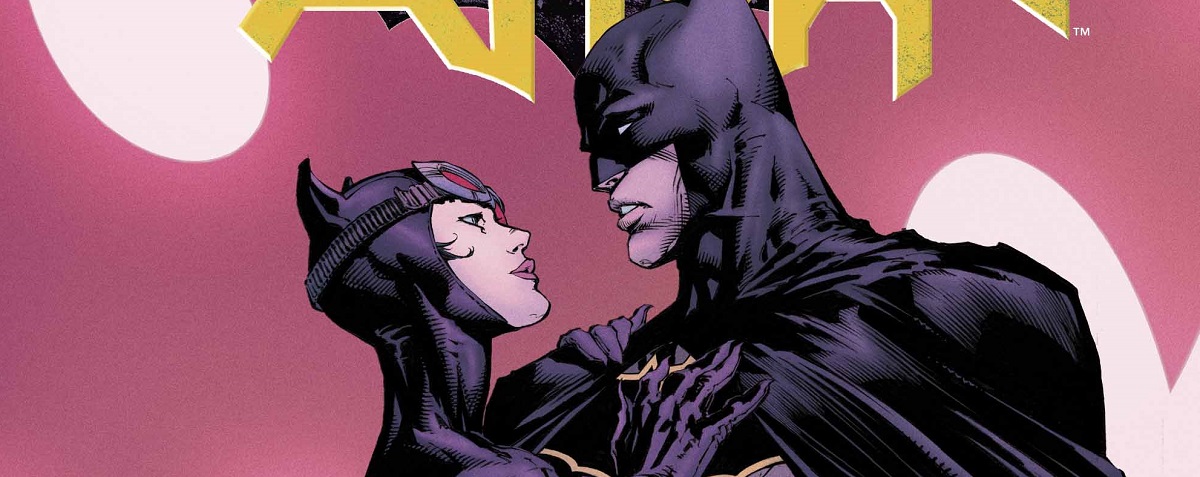
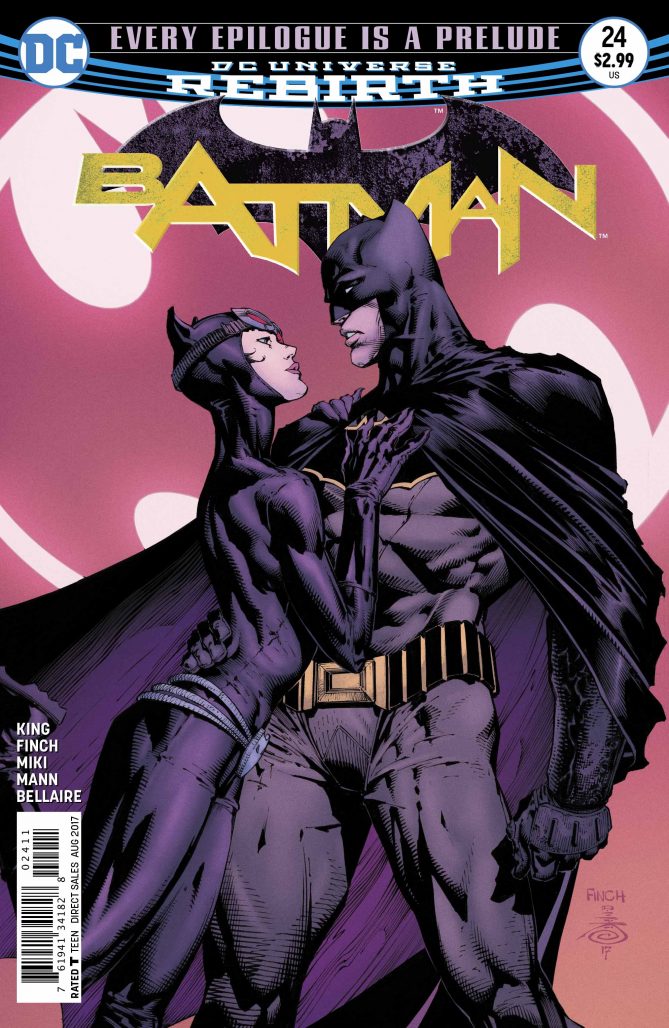
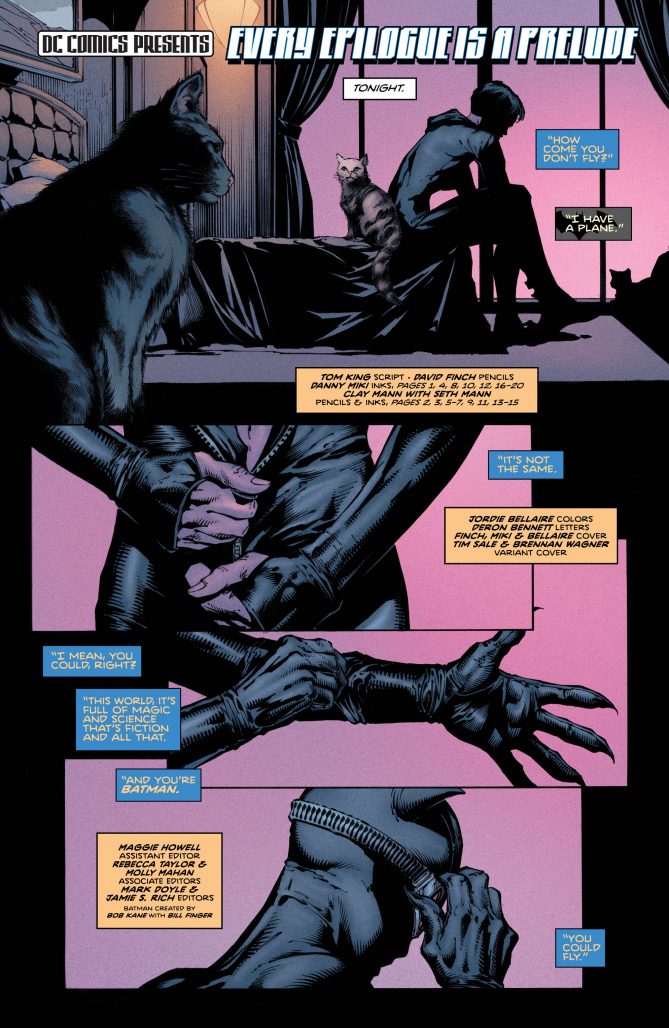
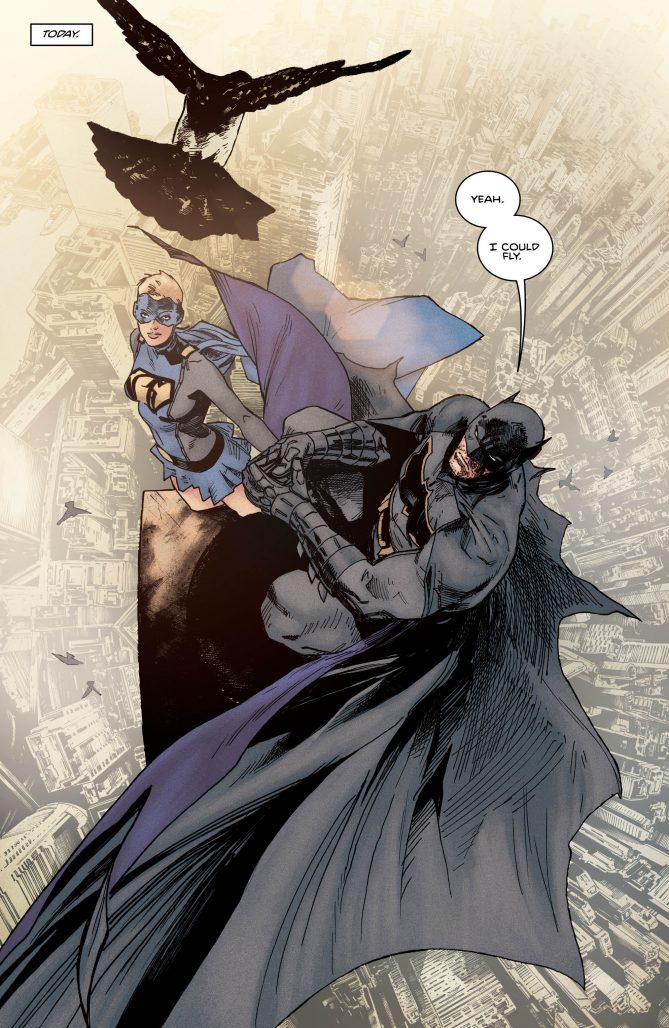
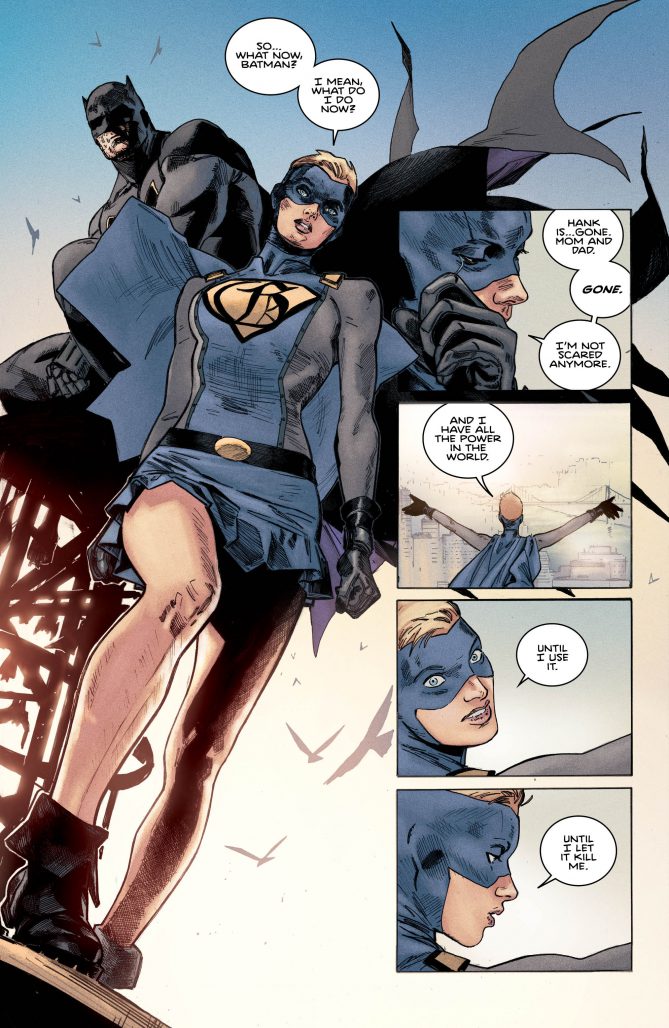
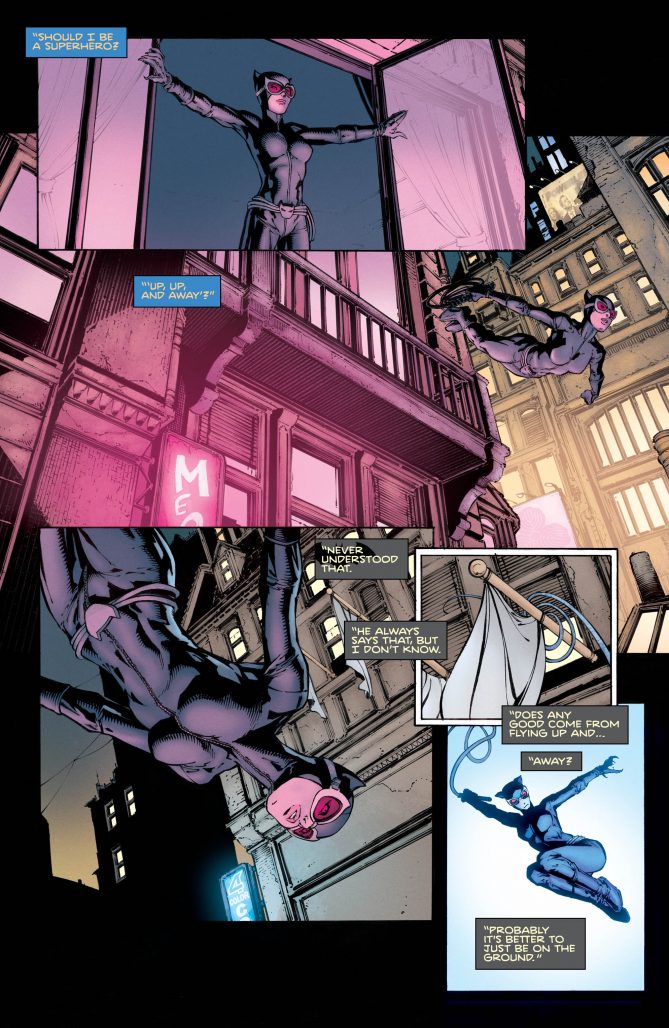
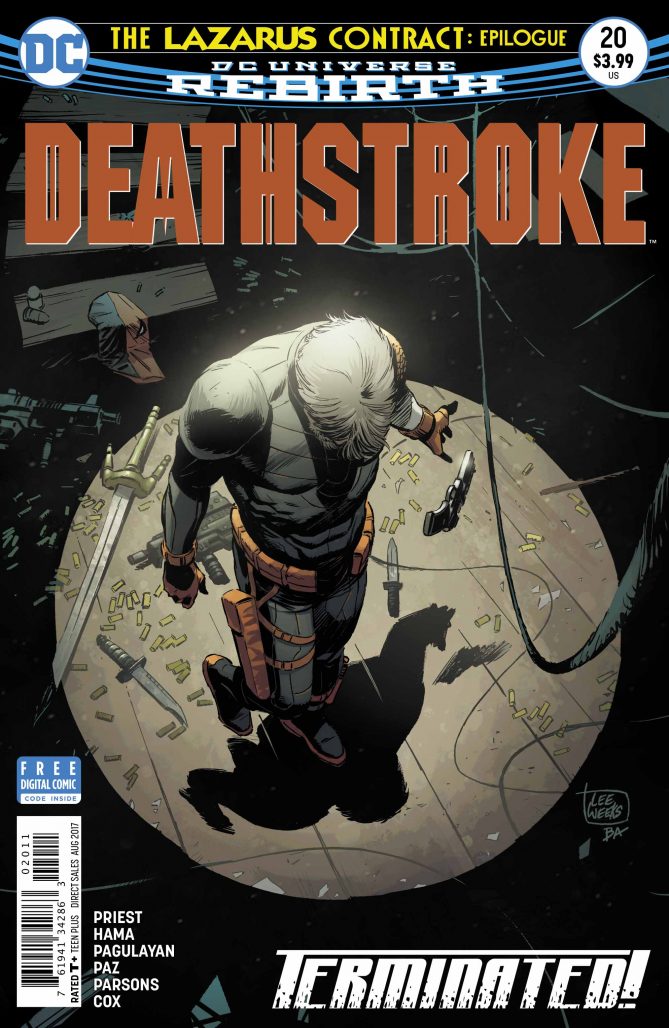
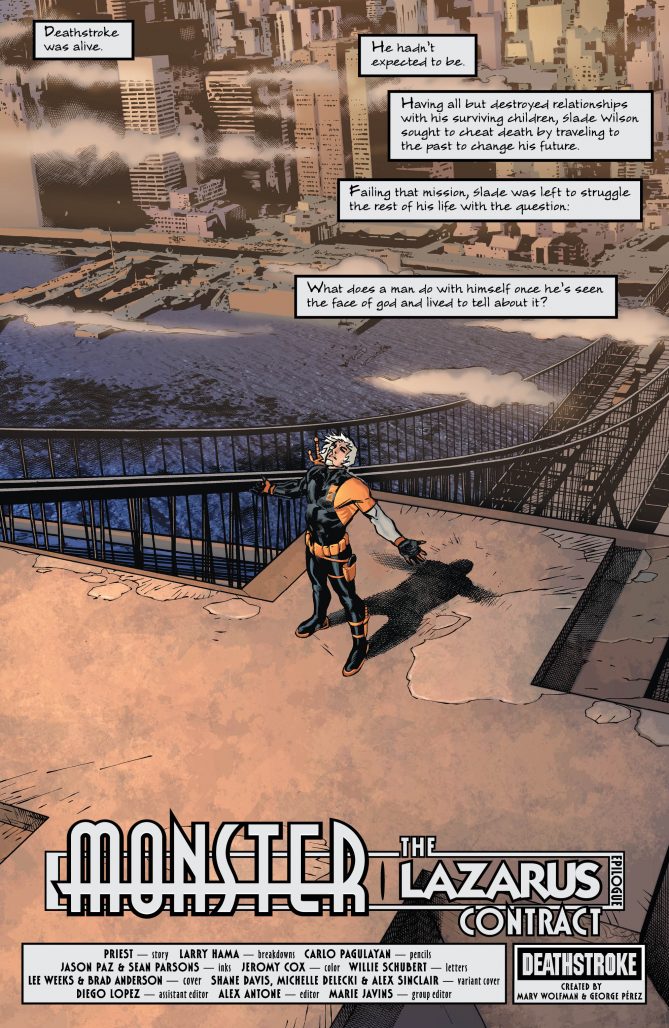
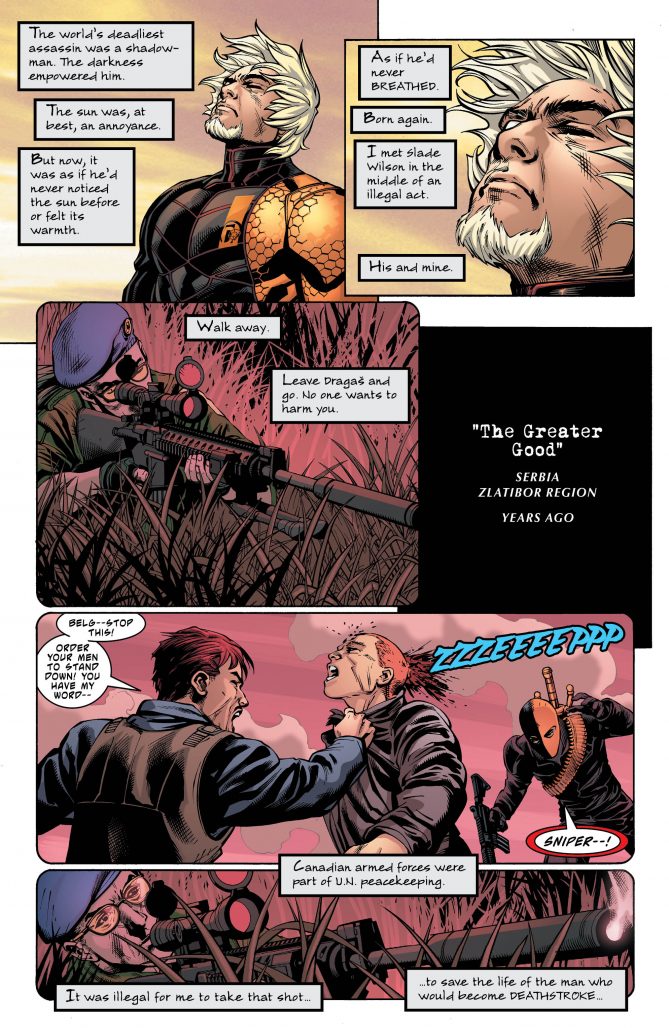
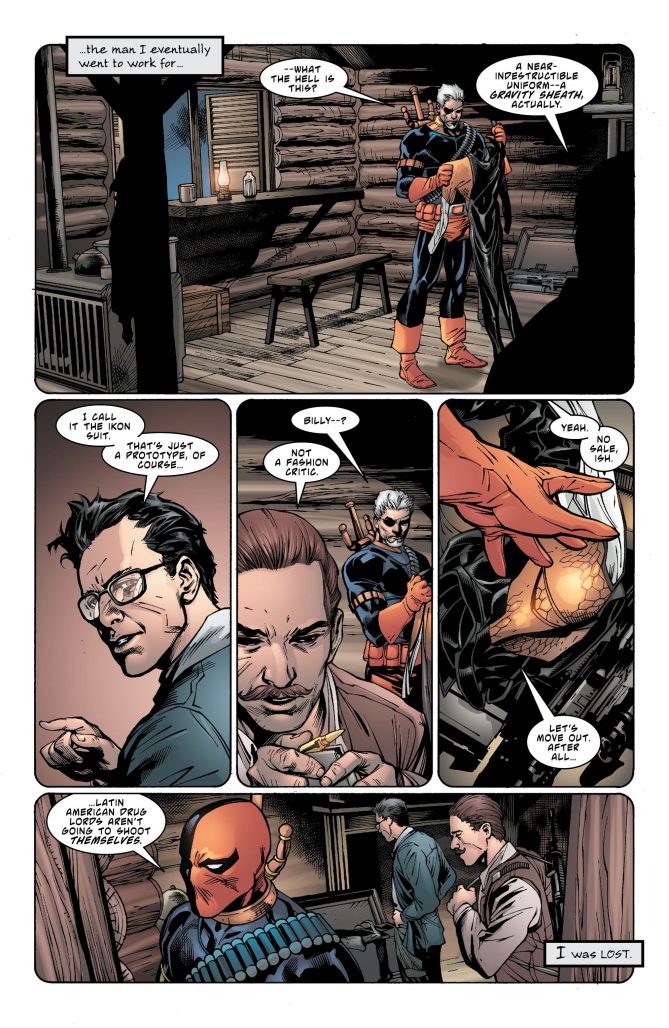
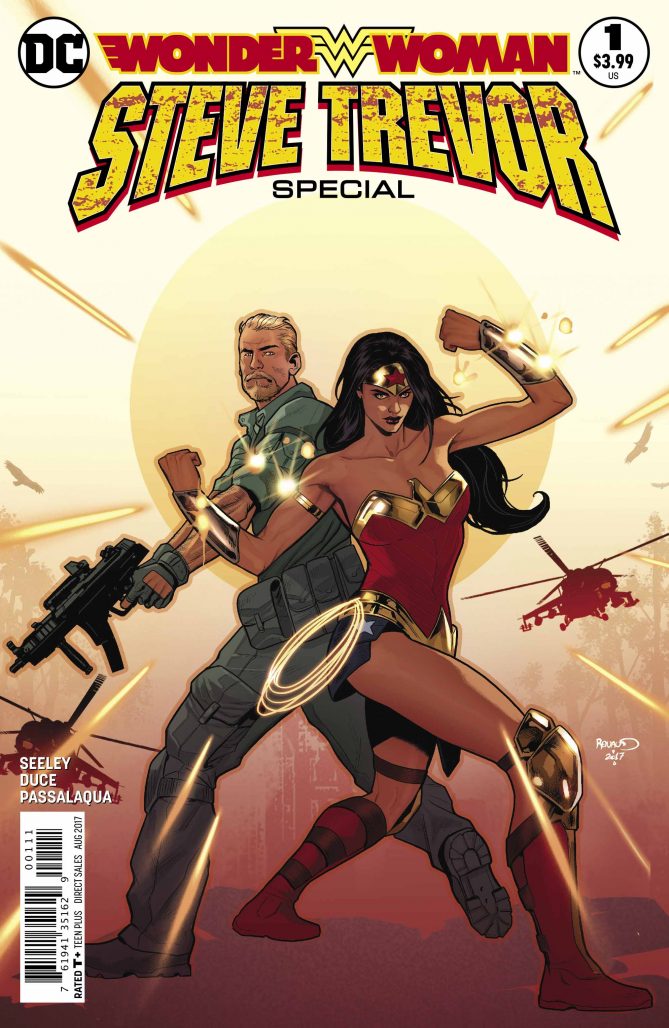

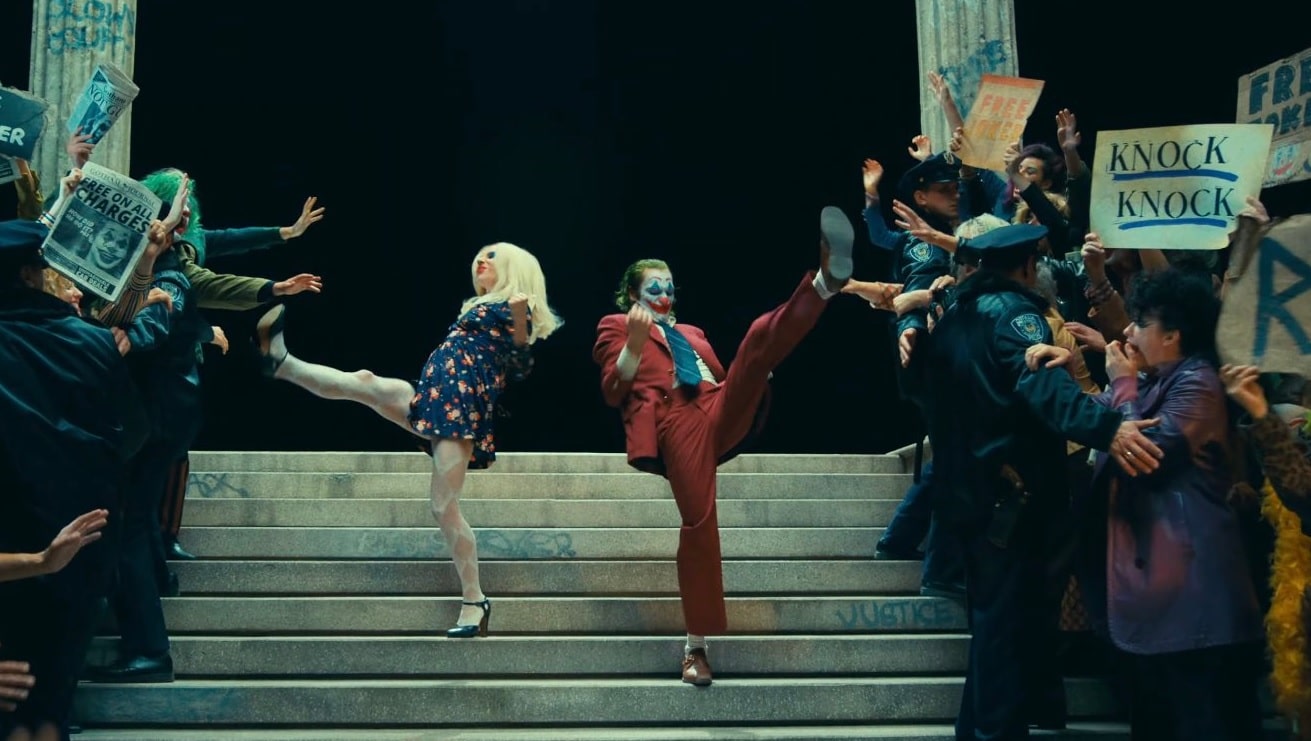



Gotta say, I was all ready to eyeroll the development in Batman, but the issue won me over — particularly the story of the diamond.
Do you think DC will let King go through with it? Will this be a major shift in status quo down the line that changes the outlook of Batman going forward (until someone One More Days it)?
Comments are closed.